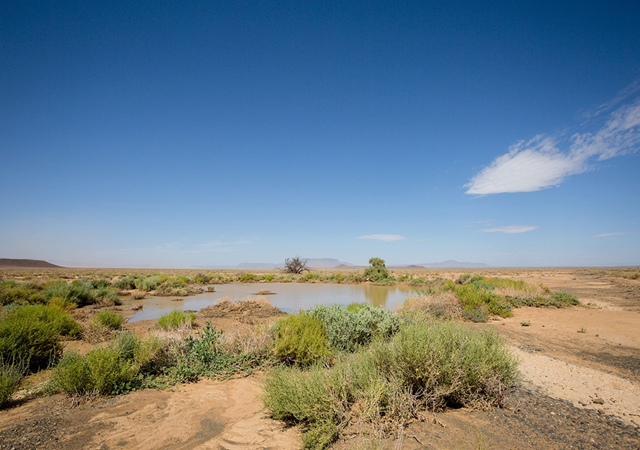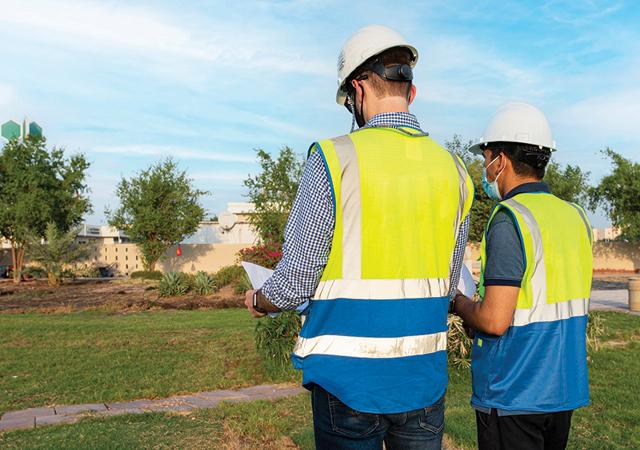
Per capita water resources in the region are only one-sixth of the global average and are continuing to decline.
Tackling challenges of NRW losses
Water scarcity, rapid urban growth, geopolitical complexities and aging infrastructure compound efficient management of water resources, according to Idrica*, which recommends modernising infrastructure, upgrading metering systems, administrative and legal reforms and digital transformation as solutions.
01 October 2024
Water is an essential resource, especially in arid and semi-arid parts of the world such as the Middle East. However, one of the most pressing issues this region has to deal with is non-revenue water (NRW) losses. This phenomenon brings significant economic losses for water utilities and exacerbates the already precarious water situation in the region.
Non-revenue water refers to water that is produced and distributed but does not generate revenue for utilities because it is lost before it reaches the customer. This can be due to a number of reasons, including infrastructure leaks, illegal connections, metering errors and administrative failures.
Non-revenue water is divided into three main categories:
Real losses: Physical losses in the system, such as through leaks in pipes, tanks and fixtures;
Apparent losses: Non-physical leaks in the system, caused by metering errors, illegal connections, fraud and incorrect billing; and
Unbilled authorised consumption: Water used by the water supply system itself for maintenance and other non-commercial purposes.
As the World Bank points out in its report “The Challenge of Reducing Non-Revenue Water in Developing Countries”, this problem accounts for approximately 35 per cent of the water produced worldwide. This huge figure has negative consequences in terms of natural resource economics, as well as service quality. However, if we look at data in the Middle East, the situation is even more worrying. According to statistics from the World Bank and other public agencies, countries such as Lebanon (48 per cent), Jordan (50 per cent), Iraq (60 per cent), Palestine (40 per cent) and Egypt (34 per cent) have some of the world’s highest rates of non-revenue water, which underscores the importance of urgently tackling this issue.
Challenges of NRW in the Middle East
Per capita water resources in the region are only one-sixth of the global average and are continuing to decline. All the countries in the Middle East suffer from groundwater depletion, with very high extraction rates in general, both from surface water and groundwater. This means that agriculture has to compete for water with industry and other sectors.
 |
|
Irrigation can be optimised with the best frequencies and amounts of water. |
The Middle East faces unique challenges in terms of water management. Christian Perez, Senior Manager, Business Development – Digital, MET at Xylem, says: “Water scarcity, rapid urban growth, geopolitical complexities and aging infrastructure compound efficient management of this resource. These challenges are further intensified by economic and social impacts, making water security a pivotal concern in the region.”
The main causes of NRW in the region thus include:
• Obsolete infrastructure: Many cities in the Middle East have piping and distribution systems that have not been upgraded in decades, leading to substantial leakage;
• Illegal connections: Rapid urbanisation and, in some cases, political instability has led to an increase in unauthorised connections;
• Metering deficiencies: Poor metering systems and administrative errors contribute to apparent losses;
• Climate change: The climate in the region is arid and/or semi-arid. Around 43 per cent of the territory is desert and, as temperatures rise, there is also an increased likelihood of extreme rainfall which, in turn, leads to flooding;
• Demographics and migratory movements: Population growth and migratory movements, fuelled by conflicts and the search for better living conditions, are increasing the demand for water, which is further compounding water resource management. According to Unicef, 11 of the 17 countries at extreme risk of water scarcity are in the Middle East and North Africa. Moreover, the population of the GCC countries is expected to increase by 14 million in 2050;
• Over-exploitation of aquifers: Excessive groundwater extraction has depleted aquifers, shrinking water availability and aggravating the risk of saline intrusion in coastal areas.
Potential solutions
Addressing the issue of NRW in the Middle East requires a multi-faceted approach involving both technological improvements as well as administrative and legal reforms:
• Modernising infrastructure: This involves investment to renovate and maintain water distribution networks to reduce leakage; and implementation of advanced technologies such as sensors and real-time monitoring systems to detect and repair leaks efficiently;
• Upgrading metering systems: This calls for the replacement of old meters with smart meters that provide accurate, real-time data; and training of staff in modern water management and monitoring techniques;
• Administrative and legal reforms: This can be achieved by tightening laws and regulations to combat illegal connections and fraudulent practices; and implementing awareness programmes to educate the population on the importance of water conservation and the impact of NRW.
• Digital transformation: Digitalisation is key to improving efficiency and sustainability in water management. Digital transformation in water utilities offers innovative solutions for smart management and monitoring of the resource, enabling better understanding of consumption patterns, early leak detection and water distribution optimisation. According to Pérez, improved water management “depends on a combination of software and analytics, together with strategic visualisation, analysis and optimisation of data flows”.
The management of big data is another key aspect of digital transformation in Middle East water utilities. The collection of mass data from different sources, such as sensors, meters and geographic information systems (GIS), provides a holistic view of the water situation in the region. According to the expert, “digital tools, such as big data analytics and digital twins, provide support for informed decision-making and system optimisation. In addition, they help with integrated water resource management, thus boosting customer engagement and ensuring regulatory compliance.”
The use of technologies such as machine learning, artificial intelligence and IoT is an opportunity to boost the hydraulic efficiency of irrigation networks in an area where there is already a high risk of water shortage, as previously mentioned. Irrigation can be optimised with the best frequencies and amounts of water; assets can be remotely controlled, and alarms can be received in the event of leaks or problems in the network by using soil moisture and meteorological sensors, and the subsequent unification of data models.
Platforms such as Xylem Vue powered by GoAigua are examples of tools that facilitate the digital transformation of water utilities in the region. These platforms integrate and analyse real-time data to enhance decision-making and operational efficiency. These platforms enable water utilities to significantly reduce non-revenue water losses by detecting leaks early, optimising water pressure, and improving overall system efficiency.
Non-revenue water is a critical challenge in the Middle East, where efficient water management is vital for sustainable development. Digital transformation represents an excellent opportunity to address these challenges and ensure a more sustainable water supply for the future.
* Idrica is a leading international water technology company specialising in digital solutions. Headquartered in Spain, it brings more than a decade of experience in the digitalisation of the water sector. Its team of over 200 experts is transforming the management of drinking water, wastewater and irrigation around the world.
- Tackling challenges of NRW losses
- Geberit: Redefining drainage engineering
- Innovative technologies to bolster water security
- Taqa unveils wastewater management projects


